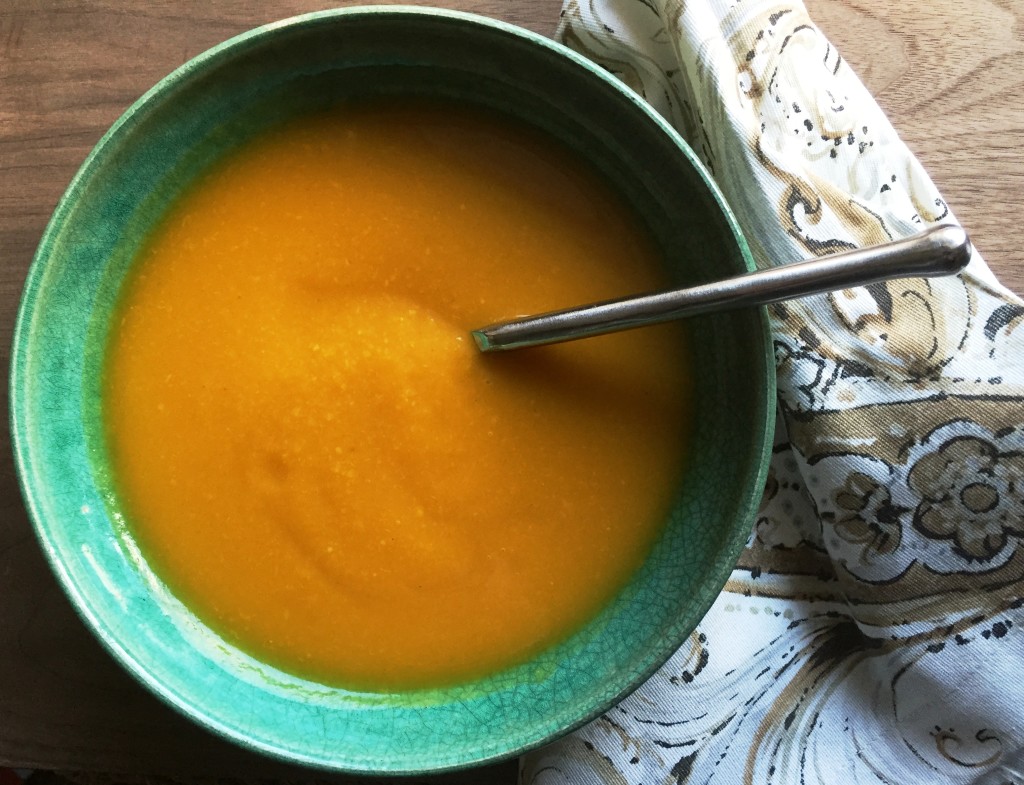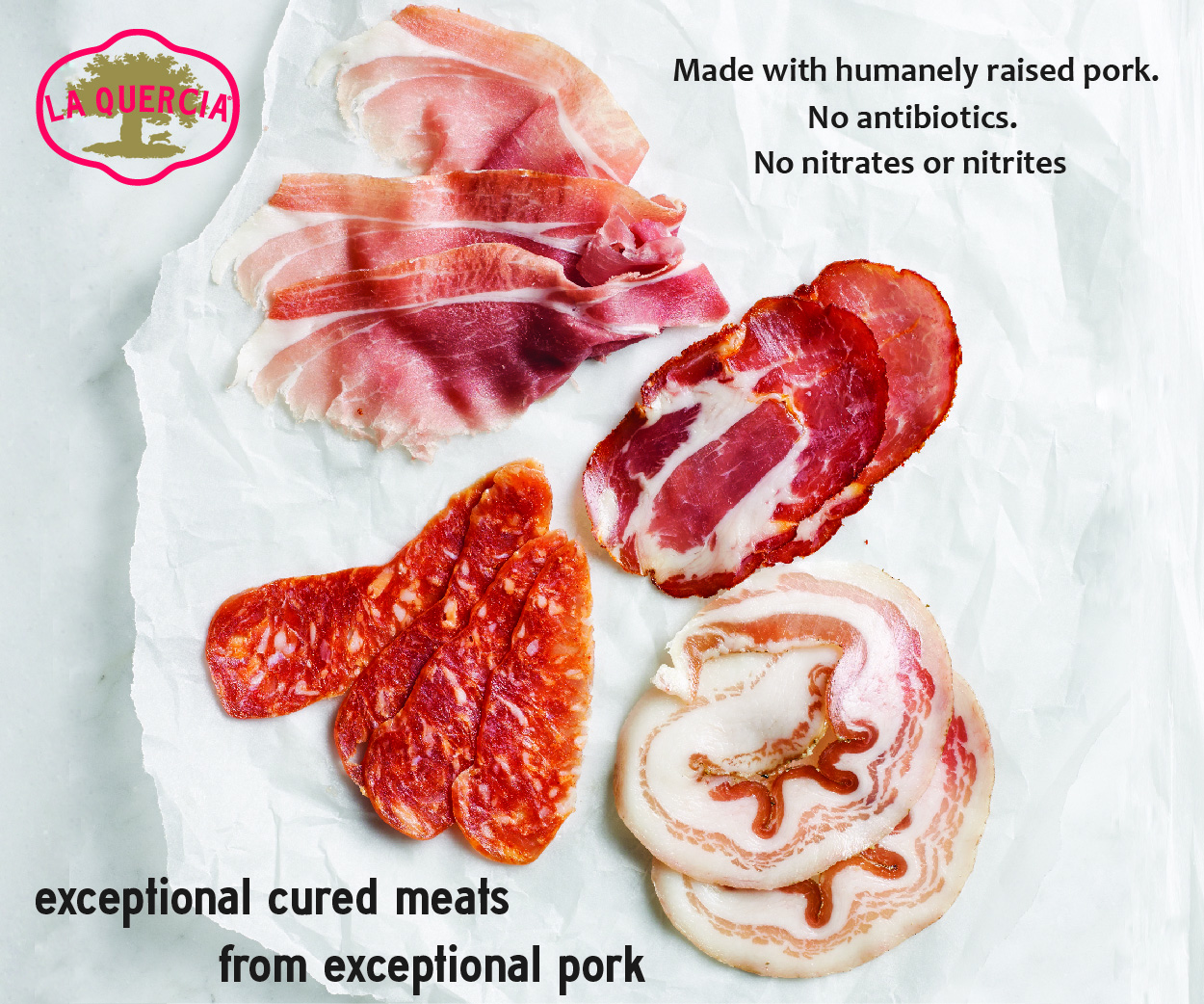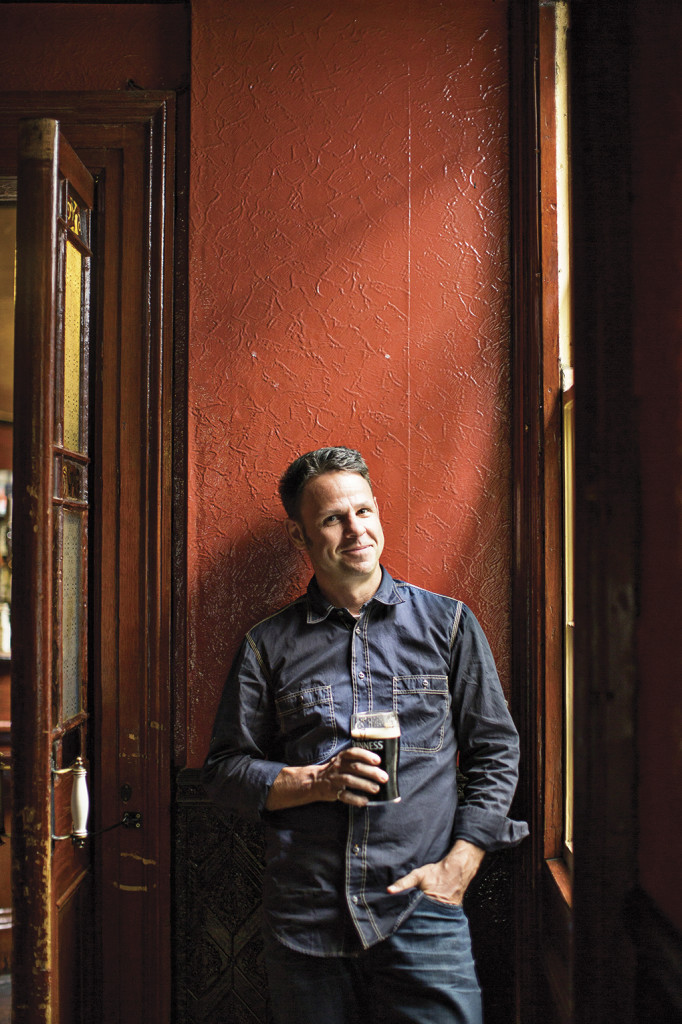
Photography credit: Scott Suchman © 2014
Cathal Armstrong was born in Dublin in 1969, which, consequently, makes him the same age as my husband (though his birthday is a few months before Adam’s). He’s one of six kids, which, consequently (and please don’t have a coronary), is the same number of kids my husband and I would like to have.
Armstrong says he grew up in a “food-centric Irish family.” Dinner consisted of multiple courses, often showcasing his favorite: rack of lamb.
“While other families hurriedly scarfed down fish fingers in front of the telly, we Armstrongs languished over three- and four-course meals. That’s probably why I never got As in school—I didn’t have enough time to study because we were too busy eating dinner all night,” Armstrong said.
My kind of guy.
The chef’s father was an avid gardener, growing some sixty kinds of fruits and vegetables on their property that the kids were responsible for tending to. He was the one that cooked for the household, though his mother was known for her baking skills (much like our Sarah of Troy, whose recent kitchen renovation includes a double oven, thus enabling her to make two batches of cookies simultaneously!)
From a very young age, Armstrong was introduced to diverse cuisine. His father, a tour operator, would whisk the family away to Greece, Spain and Tunisia, which translated into couscous, moussaka, rabbit paella and Valencia chicken. At seven, he was shipped off to France during the summers, where he learned the language … and the food: chocolate, croissants, baguettes, foie gras, fresh mussels and oysters, Brittany butter and Normandy apples.
His life took a twist as he went on to study computer programing, but Armstrong soon fell in love with working in restaurants. It was a part time dish washing job at Da Vincenzo’s pizza joint in Dublin that he took on during school where “the thought of cooking professionally took root.”
“The heat, the chaos, the camaraderie, hanging out until the wee hours of the morning, rolling pizza dough, going to the clubs on Leeson Street and drinking cheap wine until the sun came up—it was all just so intoxicating,” he said. “I woke up in class one day and decided it was time for me to quit school.”
He took that job on full time, learning the ins and outs of the kitchen, and beginning to see himself as a chef. After a short time, his father helped him launch his own restaurant—The Baytree—in a suburb of Dublin called Monkstown. His fare? Classic French cuisine. It wasn’t going well, and on the day Dublin’s most revered food critic planned to dine, Armstrong had decided not to bother opening at all … opting for a visit to the pub instead. The next day, the review in the paper read: “The Baytree was mysteriously closed.”
The restaurant closed within ten months.
A year later, he landed in the United States, broke and confused about what was next. He got a job in Washington, D.C., at an Irish pub named Murphy’s. He progressed quickly from there, to New Heights and the now-defunct Cities. That’s where he met his wife, Meshelle. Next it was Gabriel, then Washington, D.C.’S acclaimed Vidalia, where he worked under Chef Jeffrey Buben.
Armstrong says Buben taught him the discipline which allowed his knowledge of French cuisine to truly blossom.
“Vidalia was a whole new world, and a much more challenging kitchen than any other I had ever worked in. At a rapid pace, an education was forced upon me. To say that Buben was a taskmaster and a tough person to work for would be a gross understatement.”
But the hard work paid off, and he soon found himself at nearby Bistros Bis, cooking for the likes of Julia Child … who returned to dine again the same week, this time with Chef Jaques Pépin (oh, how I love thee … let me count the ways!) It was at Bis where he learned the ins and out of managing a restaurant, and thus the it became the launching pad for Restaurant Eve, a fine-dining establishment in Alexandria, Virginia, which he opened with wife Meshelle in 2004. The restaurant demonstrates Armstrong’s commitment to, and love of, fresh, locally-sourced ingredients. That’s reflected in the garden he’s planted at the restaurant—a reminder of the family tradition started by his father.
The food is divine, I assure you, which explains why in 2006, Food & Wine magazine named Armstrong one of the ten best new chefs in the United States.
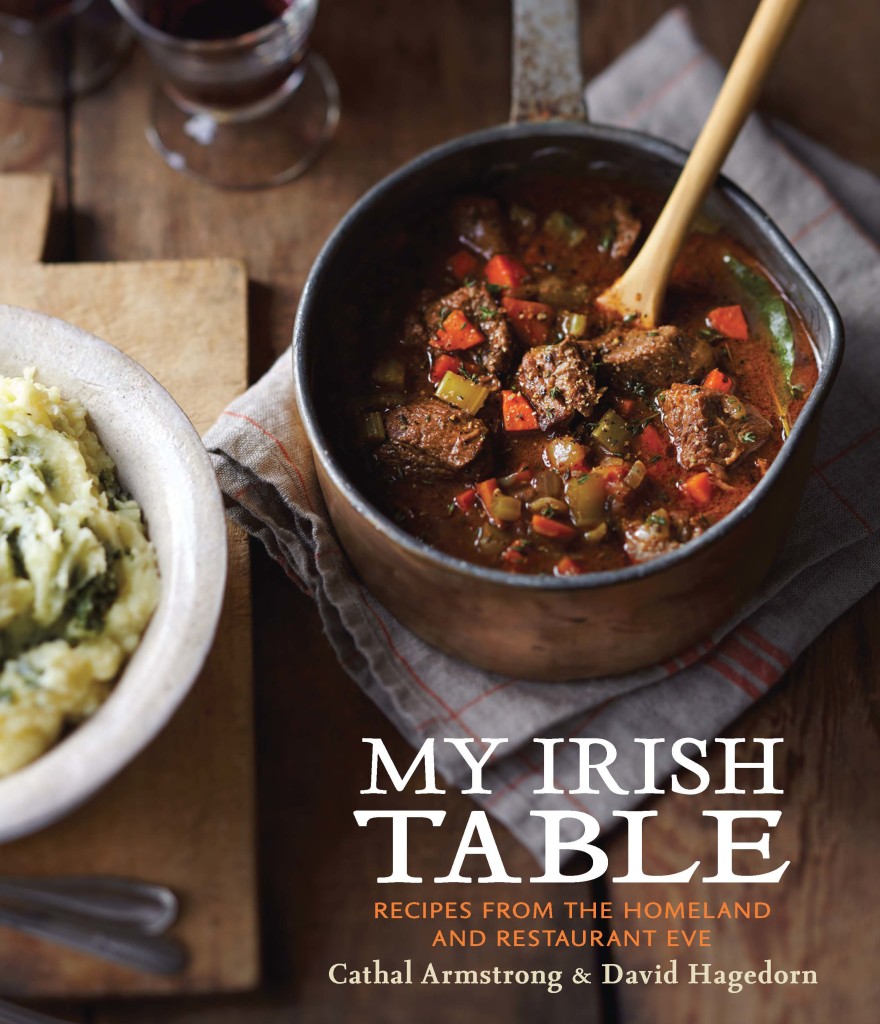
Photography credit: Scott Suchman © 2014
So why are we talking about chef Cathal Armstrong—aside from his heritage—to cap off our month on the Emerald Isle? It’s a sweet little cookbook called My Irish Table, chock full of recipes from both his homeland and Restaurant Eve.
Irish food is about so much more than potatoes, though the scalloped version on the advanced reader’s copy made my mouth water. The book is broken down into user-friendly topics that include Irish breakfasts (tomatoes three ways, orange marmalade and pork loin bacon—’cause you know how bacon-obsessed we are around here!) and “Fridays Are For Fish” (Pan-Roasted Loin of Monkfish with Fava Bean, Mussels, and Bacon Ragout … or how about Salt-Baked Dublin Bay Prawns with Ailoi? We love anything baked in salt!)
There’s an entire chapter on Special Occasions, and another on Brine, Stocks, Sauces, and Relishes. The chapter of Restaurant Eve favorites made me want to get out my roasting pans for Pork Belly with Braised Cabbage and Poached Apples … or get out my phone and make a reservation (primarily because we’ve just moved and our stove isn’t working yet, anyway.) I don’t want Adam to cry since he still has a week to go until he can have Irish Coffee again, but there’s a recipe for that, too.
And oh … the sweets section! Complete with Custard, Mincemeat … and Pineapple Upside Down Cake—one of my faves.
Here’s the thing: I’m a sucker for a good story, and I love the one Armstrong has told here through his personal recollections, intimate family photos and page upon page of delicious food. It’s a great cookbook, and one I highly suggest adding to your collection—if not for the gorgeous Shepherd’s Pie alone.
And lest we forget a nod to the chef’s fave, here’s the recipe for his aforementioned fave—rack of lamb—from My Irish Table.
As Julie Child would say (over and over if Cathal Armstrong was cooking) … Bon Appétit!
Pan-Roasted Rack of Lamb with Rosemary Jus
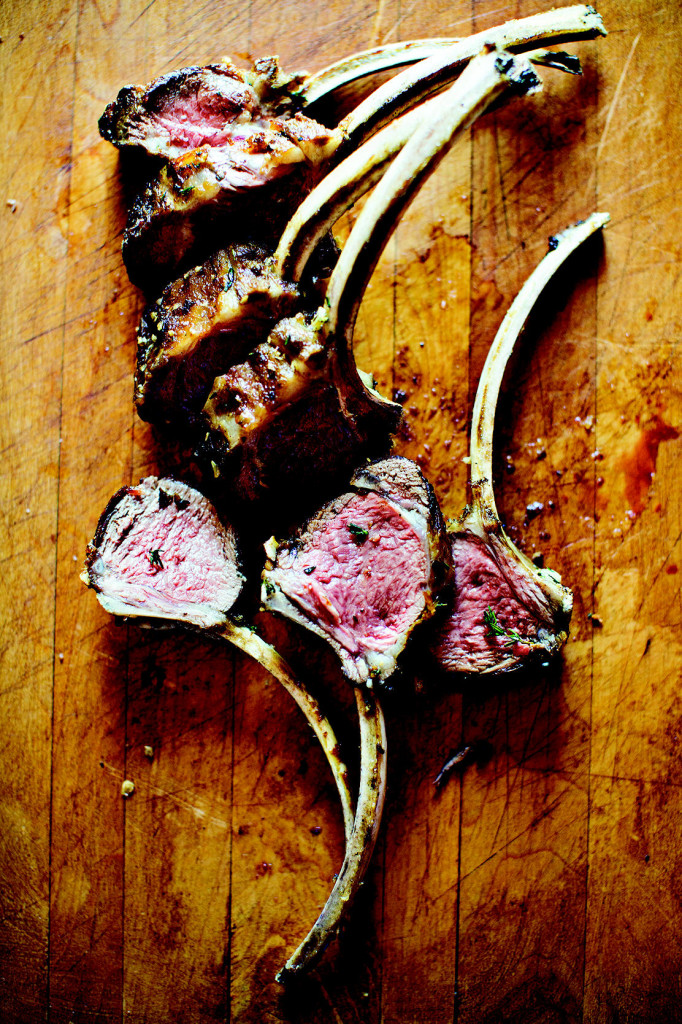
Photography credit: Scott Suchman © 2014
Reprinted with permission from My Irish Table by Cathal Armstrong, copyright © 2014. Published by Ten Speed Press, a division of Penguin Random House, Inc.
Chef Armstrong’s Note: A special treat for me is rack of lamb, so rich and luxurious. The most common way to prepare it is to sear it and finish it in the oven, which is fine. My preferred method is stove-top pan-roasting. (See On Pan-Roasting, page 118.) Be sure to begin with an untrimmed rack; if you prefer for your butcher to French it, ask him to give you all the meat scraps, which you need for the glace (a concentrated meat jus) that is the base for the sauce accompanying this dish. When you buy lamb racks out of the meat case of a grocery store, they are usu- ally trimmed of the fat and shoulder meat. For this reason, it is best to buy the lamb from a butcher. Today I can’t imagine eating the frozen corn on the cob I requested when growing up. As side dishes, I’d recommend Roasted Potatoes (page 182), Creamed Leeks (page 171), and “Marrowfat” Peas (page 172).
Serves 4 to 6
Lamb Rack
2 (8-bone, 41/2-pound) racks of lamb, chine bones removed by your butcher
6 tablespoons canola oil, plus more as needed
Kosher salt and freshly ground black pepper
2 teaspoons unsalted butter, at room temperature
2 teaspoons chopped garlic
2 teaspoons finely chopped fresh thyme leaves
Lamb Glace
1 tablespoon canola oil
Lamb scraps (reserved from the whole rack)
1/2 yellow onion, chopped
1 celery stalk, chopped
1 carrot, peeled and chopped
2 cloves garlic, chopped
1/4 cup dry red wine
1 cup lamb demi-glace (page 244)
10 sprigs fresh thyme
1/2 sprig fresh rosemary
1 large fresh bay leaf
Jus
2 teaspoons cold unsalted butter
1 large shallot, minced
1/2 teaspoon blanched and finely chopped rosemary leaves (see Notes on Herbs, page 64)
1/4 teaspoon kosher salt
1/8 teaspoon freshly ground black pepper
French the racks: Using a boning knife, pull the fat cap off of each rack, trimming the racks down to their loin centers, known as the racks’ eyes. Using a boning knife, remove the shoulder blades from the fat caps and set them aside. Cut out and save any meat in the fat caps, trimming it into approximately 1-inch scraps. French the racks by cutting away all of the meat around and between the ribs to completely denude the bones down to the eyes. Use the butt-end of the knife to scrape any fat or membrane left on the bones. Set all the scraps aside. Discard the fat.
Make lamb glace: In a heavy saucepan over medium-high heat, heat the 1 tablespoon canola oil until it shimmers. Add the trimmed meat scraps, distributing them evenly over the bottom of the pan; let them cook undisturbed for 2 minutes. Turn the scraps over and sear for 2 to 3 minutes more until well browned. Stir in the onion, celery, carrot, and garlic and cook, stirring occasionally, for 3 to 4 minutes, until golden brown. Add the wine and use a flat-edged wooden spatula to scrape any brown bits from the bottom of the pan. Continue to cook until most of the wine has evaporated, about 2 minutes. Stir in the demi-glace, thyme and rosemary sprigs, and bay leaf. Bring the liquid to a simmer and cook for 12 to 15 minutes, skimming often to remove the impurities and fat that rise to the surface. Strain the glace through a fine-mesh sieve into a measuring cup and reserve.
Cook the lamb: In a large slope-sided sauté pan over medium-high heat, heat the 6 tablespoons canola oil until it shimmers. Season the racks well with salt and pepper and sear them, starting with the flesh sides down, for 2 minutes. Turn the racks over and sear for 2 more minutes. Using a meat fork to hold them in place, sear the racks for 2 minutes on both ends. Lower the heat to medium and start a process of cooking and basting the racks, turning them over and over, first on one side, then the other and on both ends, tilting the pan slightly so your spoon can scoop up the oil to baste with. Continue the process of turning and basting for about 15 minutes, until a cake tester inserted into the cen- ter of a rack and pressed against your lip feels warm. (If the oil begins to blacken during the process, pour it off and replace it with fresh oil.)
Add the final seasoning: As soon as the lamb is done, quickly add the 2 teaspoons of butter, 2 teaspoons of chopped garlic, and 2 teaspoons of chopped thyme to the pan and baste the racks quickly for several seconds, taking care to cook the garlic but not burn it, adjusting the heat if neces- sary. Transfer the racks to a cutting board to rest for 15 minutes.
Make the jus: Heat 1 teaspoon of the butter in a small saucepan over medium-high heat until it bubbles. Add the shallots and let them sweat for 1 minute until translucent. Stir in the reserved lamb glace and bring to a boil. Whisk in the remaining 1 teaspoon of butter and the rosemary, salt, and pepper. Keep warm over very low heat.
Present the dish: Transfer the sauce to a small pitcher or gravy boat. Carve the racks into chops and arrange them on a warm serving platter. Spoon some of the sauce over the chops, and serve with your chosen side dishes.
On Pan-Roasting
Searing and finishing in the oven is a common way to cook small items, like a steak, a piece of fish, a chunk of pork belly, or a rack of lamb, but not neces- sarily the ideal method of preparation. The method of pan-roasting I employ yields more consistent and often better results, which is why it is a preferred method in some of the world’s best kitchens.
With pan-roasting, all the work is done on the stove top. You use a fair amount of oil and cook the items over medium to medium-high heat, turning them frequently and continually basting them with the hot oil so they cook and brown evenly. The technique requires a bit of dexterity and patience, but what you
wind up with is more succulent because the cook- ing is more even. The heat source is direct instead of emanating from the bottom of the oven. As you go through the process, the oil may burn. It can be a challenge to maintain the heat in such a way to keep that from happening; it takes a little practice. Should the oil burn, simply dispose of it, wipe the pan clean, and continue with fresh oil.
Adding garlic and herbs for the final stage of basting imparts an extra level of complexity that you don’t get from oven roasting. The flavor-infused oil finds its way into the meat or fish but remains forward on the palate.
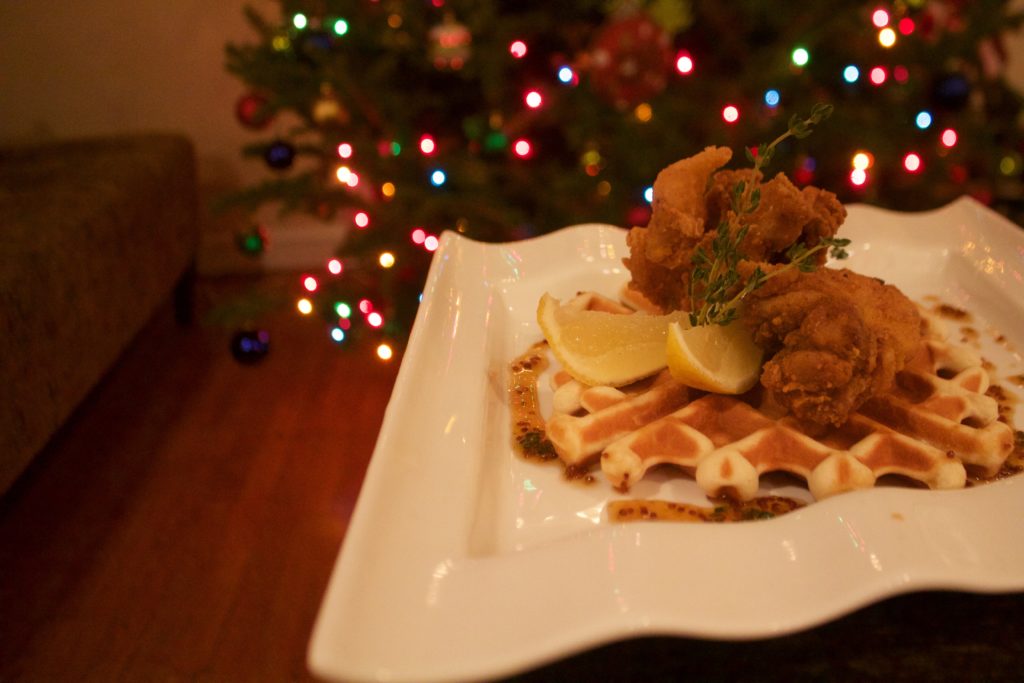 For the last week of December, and of 2016, We The Eaters recruited Chef Will Young to give his take on homemade, honey-inspired gift.
For the last week of December, and of 2016, We The Eaters recruited Chef Will Young to give his take on homemade, honey-inspired gift.Place the parchment in front of you the long way and spoon the butter on to the sheet 2 inches from the bottom of the parchment.
Place all the ingredients in a sauce pan and bring to a boil for a few second and turn off.

 There’s a lot to love about Sara Polan.
There’s a lot to love about Sara Polan.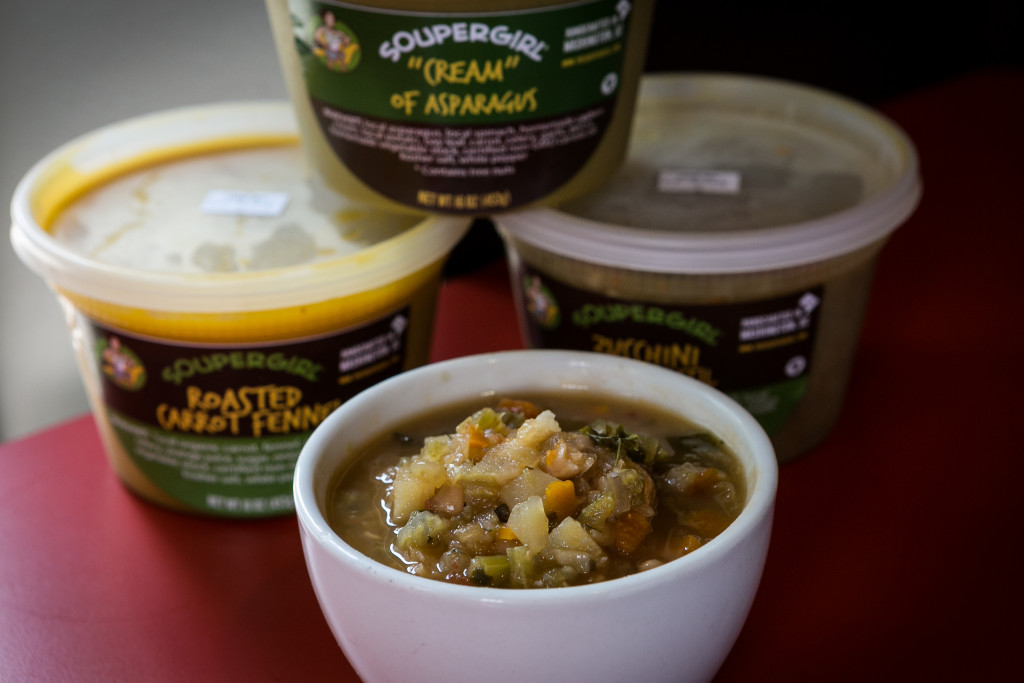 “We are not supposed to be eating tomatoes, cucumbers, peppers, peaches in the winter when our body craves starches and root vegetables.” she said. “Whatever we want is at our fingertips, and we don’t want to think about how it got there.”
“We are not supposed to be eating tomatoes, cucumbers, peppers, peaches in the winter when our body craves starches and root vegetables.” she said. “Whatever we want is at our fingertips, and we don’t want to think about how it got there.”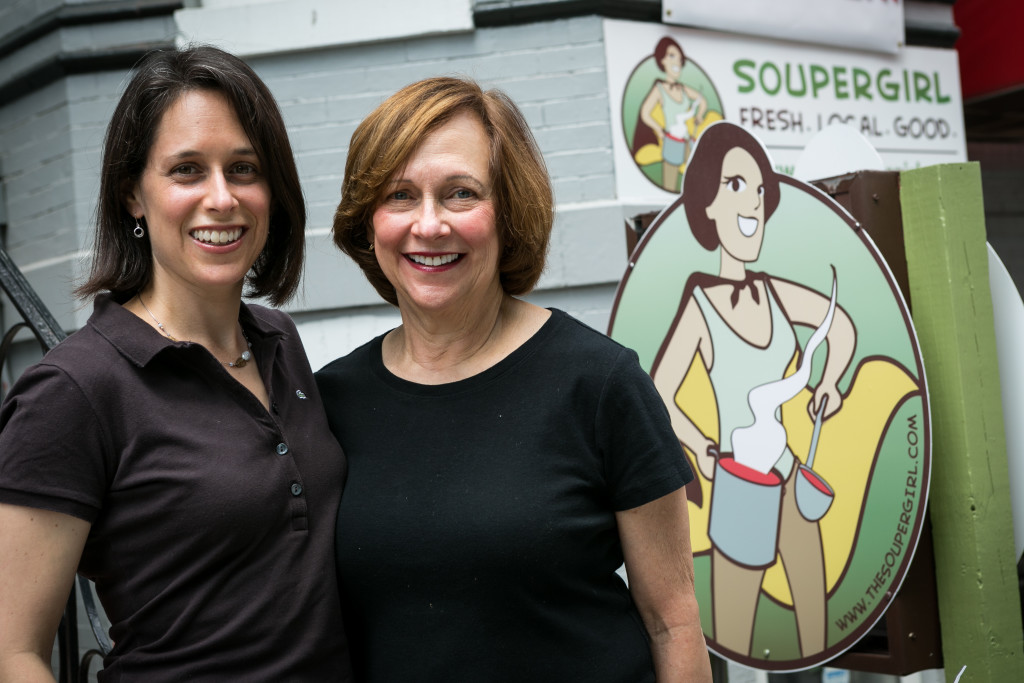 “What one person calls a thick soup, another person calls a stew.”
“What one person calls a thick soup, another person calls a stew.”